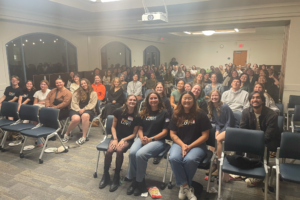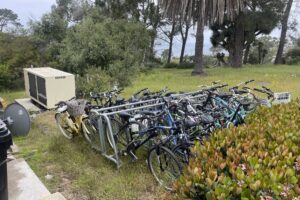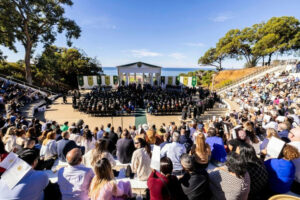There will be an active shooter drill on the PLNU campus along with the Liberty Station and Mission Valley campuses on Mar. 21. This drill is supposed to give the students, faculty and other staff on campus the opportunity to practice the active shooter protocol.
According to Kaz Trypuc, supervisor in the Department of Public Safety, there are three steps to the drill where students and faculty will have the choice whether or not to participate.
Step one will allow students to take 10 minutes to think about what they might do during an attack and go through the “run, hide, fight” response. This response allows the students and faculty to think through their escape route, find a spot out of the shooter’s view and lock or barricade the doors, and lastly, fight if there is nothing else to do.
“It provides an opportunity for the campus, not everyone has to take it obviously, to pause and think through how each individual person might respond in that situation and to think about do I know what to do and do I know where to go?” said Trypuc.
Step two is the action taken by the Emergency Response Coordinators (ERC’s) to lock and secure the part of the building that they are responsible for.
Public Safety has also worked to install Emergency Lockdown Controls in many of the buildings on campus, including Latter and Sator Hall, portions of Ryan Learning Center, the residence halls and the Liberty Station campus.
These controls allow Public Safety to lock the buildings instantaneously. This system is efficient but also expensive, which is why only a few buildings have it as of right now, according to Trypuc.
The ERC’s are there to lock the doors in the older buildings that don’t have the instantaneous lockdown system installed.
Step three includes sending out the emergency response to all students, faculty and staff. This response allows for the message to get out more broadly and more rapidly. This step also includes initiating the new lockdown system.
Yet for some students, this drill may cause some unwanted feelings especially from those who have been in school shootings themselves.
Emily Mowers, a senior cross-disciplinary integrate studies major at PLNU, was in her high school when an individual started shooting and believes that the drill should be optional because of the response of some of the students.
“A lot of people don’t take it seriously,” said Mowers.
Mowers had lockdown drills at her high school but still found that after the shooting happened, the drills didn’t provide enough information to the students in time.
A sophomore physics major, Emma Vahle, was in class her sophomore year of high school on Friday, Dec. 13 when she heard a sound like a locker dropping. Her teacher ran over to the door and locked it and told her students to get behind their desks.
The shooter, a senior at the school, had shot another student and himself when the cops arrived at the school.
Vahle explains the need for conversation about these topics even though it might be hard to talk about and for some, hard to relive.
“I think it’s good to think about,” said Vahle. “And there’s a lot of stuff in our Loma bubble that we don’t think about, which makes it happier sometimes, but I think there’s stuff we need to be aware of.”
And for Trypuc, the increase of school shootings and the conversations that do circulate around these events may lead to more students wanting to participate in drills like the one on Mar. 21.
“Given how many conversations are taking place around these incidents, I’d be curious to see how much more willing both faculty in class and students who are just not in class that day are willing to participate,” said Trypuc.









Add Comment